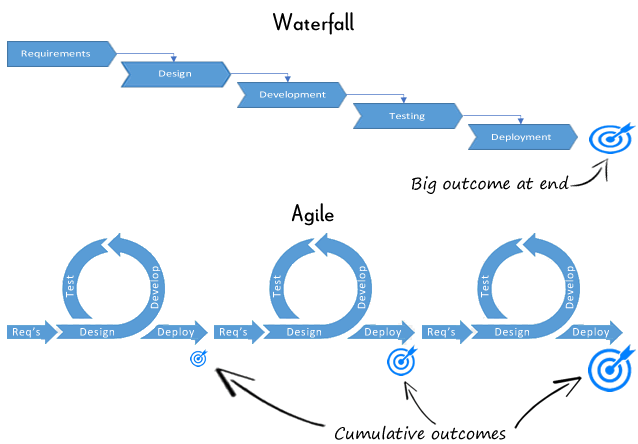“In Agile, we celebrate small victories and believe that incremental progress leads to significant achievements.”
In today’s fast-paced and ever-changing business landscape, traditional software development methodologies often struggle to keep up with the demands of modern projects. In response to this challenge, Agile Development has emerged as a popular and effective approach to software development. Agile emphasizes flexibility, collaboration, and customer-centricity, making it a perfect fit for dynamic projects with evolving requirements. It enables the development team to respond swiftly to changes and deliver timely solutions.
According to the State of Agile Report 2020, 95% out of 4000 respondents prefer Agile development. The methodology promotes cross-functional teams across the organization, which helps speed up the entire development process. In this blog, we will explore the Agile Development Model and highlight the benefits of adopting it in your software development processes for enhancing efficiency in your business.
Understanding Agile and How it’s Different from Other Traditional Methods?
The Agile methodology is a flexible and interactive approach to software development that emphasizes collaboration, adaptability, and customer feedback. It breaks projects into smaller time-boxed periods called “sprints” and promotes transparency through visual tools like Kanban boards. Agile project management allows for responsive changes and continuous improvement, enabling teams to deliver high-quality results efficiently.
In contrast, the traditional Waterfall methodology follows strict phases and is less responsive to change, resulting in longer development cycles and potential misalignment with customer needs. Agile’s iterative and incremental approach addresses the drawbacks of Waterfall, fostering a faster and more adaptive software development process.

“If you plan short 4-8 week sprints, every little achievement can be a success story, however small (even a 2 person change which has a measurable business impact to a business process). Small = greater commitment for all.”
Agile Principles
- Customer Collaboration over Contract Negotiation: Prioritizing understanding and collaborating with customers throughout the development process to deliver a product that meets their expectations.
- Iterative and Incremental Development: Breaking projects into smaller iterations or sprints to deliver incremental value and enable quick adaptation to changing requirements.
- Embracing Change: Viewing change as an opportunity for improvement rather than a disruption to the development process.
- Self-Organizing Teams: Empowering teams to be self-organizing, allowing them to make decisions and take ownership of their work.
- Regular Reflection and Improvement: Holding regular retrospectives to identify areas for improvement and continuously learn from their experiences.
How Agile Helps in Improving Business
- Increased Flexibility: Agile’s iterative nature allows teams to adapt to changes swiftly, ensuring the final product better meets the customer’s evolving needs.
- Higher Customer Satisfaction: Regular feedback and collaboration with customers throughout the development process ensure the end product aligns closely with their expectations, resulting in higher customer satisfaction.
- Faster Time-to-Market: Agile’s incremental approach enables the delivery of usable features in short cycles, reducing time-to-market and gaining a competitive advantage.
- Enhanced Team Morale and Collaboration: Empowering self-organizing teams fosters a positive work environment, enhancing team morale, and promoting effective collaboration.
- Reduced Risk of Project Failure: Agile’s adaptability helps identify potential issues early in the development process, reducing the risk of costly project failures.
Tips for Successful Agile Implementation
- Education and Training: Invest in Agile training for the development team and stakeholders to ensure a shared understanding of the Agile principles and methodologies.
- Start Small: Begin by implementing Agile in a pilot project before scaling it up to larger and more complex projects.
- Clear Communication: Foster open and transparent communication within the team and with stakeholders to facilitate a smooth Agile adoption.
- Embrace Tools: Utilize Agile project management tools like Jira, Trello, or Asana to streamline processes and enhance collaboration.
Conclusion
The Agile Development Model has proven to be a game-changer for software development projects across various industries. By embracing the Agile mindset, businesses can adapt to market changes, deliver customer-centric solutions, and stay ahead of the competition. Remember, Agile is not a one-size-fits-all solution; it requires commitment, collaboration, and a willingness to continuously improve. By incorporating Agile principles and methodologies into your development process, you can unlock the full potential of your team and deliver exceptional software products.
“It’s not the strongest or the most intelligent who will survive, but those who can best manage change.” – Charles Darwin




























